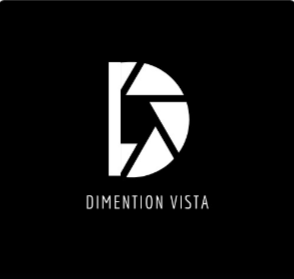Choosing the right tech stack is a critical decision for any business aiming to develop digital solutions, whether it’s a website, mobile app, or enterprise software. Your tech stack directly impacts performance, scalability, development speed, and long-term success. With the vast array of technologies available today, the process of selecting the best combination can feel over whelming.
In this guide, we’ll break down the Right Tech Stack for Your Business provide actionable advice, and highlight key considerations to help you make an informed decision.
What is a Tech Stack?
A tech stack refers to the combination of technologies, frameworks, programming languages, and tools used to develop and run a software application. It’s typically divided into two main categories:
- Frontend (Client-Side): The part of the application that users interact with, such as web pages or mobile app interfaces. Common frontend technologies include HTML, CSS, JavaScript, and frameworks like React, Angular, or Vue.js.
- Backend (Server-Side): The infrastructure that powers the application behind the scenes, including servers, databases, APIs, and programming languages like Python, Java, Ruby, or Node.js.
Additionally, many applications rely on third-party tools, DevOps solutions, and cloud platforms to manage hosting, deployment, and scaling.
Why Choosing the Right Tech Stack Matters
The choice of tech stack can significantly influence:
- Development Speed: Certain technologies are more developer-friendly, enabling faster coding and iteration.
- Scalability: The ability to handle growing traffic, data, or users over time.
- Cost: Development and maintenance costs can vary based on the technologies chosen.
- Performance: A well-suited tech stack ensures smooth performance and reliability.
- Developer Availability: Popular technologies are easier to staff for since more developers are skilled in them.
Steps to Choosing the Right Tech Stack
1. Define Your Business Goals and Project Requirements

Start by outlining your project’s specific needs, goals, and constraints. Consider:
- Project Type: Are you building an e-commerce site, SaaS platform, mobile app, or internal tool?
- Target Audience: Who will use your application? Will it need to support high traffic or specific devices?
- Features and Functionality: Define core features, such as user authentication, payment gateways, or integrations.
- Scalability Needs: Consider your growth plans and whether the application will need to handle increased usage over time.
2. Consider the Size and Expertise of Your Team

Evaluate the skill set of your development team. For example:
- In-House Expertise: If your team specializes in JavaScript, a tech stack like Node.js and React might be a natural fit.
- Outsourcing or Hiring: Consider the availability of developers skilled in specific technologies if you plan to hire externally.
3. Analyze Budget and Time Constraints

Certain technologies require more development time or come with higher licensing costs. Open-source tools like Laravel or Django may reduce costs compared to proprietary options.
4. Prioritize Scalability and Performance

For projects with high scalability needs, choose technologies designed to handle large-scale applications. For example:
- Cloud Platforms: AWS, Google Cloud, and Microsoft Azure provide robust scaling solutions.
- Databases: NoSQL databases like MongoDB handle unstructured data and rapid scaling, while SQL databases like PostgreSQL offer structured and complex queries.
5. Evaluate Security Requirements

Data security is critical. Look for technologies with strong security practices and frameworks that support encryption, secure APIs, and regular updates.
6. Research Industry Trends and Case Studies

Stay updated on trends and learn from similar businesses:
- Example: Netflix uses Node.js for its high-performance streaming services, demonstrating its scalability.
- Example: Airbnb’s use of React ensures a seamless user experience on their platform.
Popular Tech Stacks by Business Type
1. E-Commerce Platforms
- Frontend: React, Angular
- Backend: Node.js, Ruby on Rails
- Database: PostgreSQL, MongoDB
- Additional Tools: Shopify API, Stripe for payments
2. Mobile Applications
- Frontend: Flutter, React Native
- Backend: Firebase, Django
- Database: SQLite, Firebase Realtime Database
3. Enterprise Software
- Frontend: Vue.js, Angular
- Backend: Java, .NET Core
- Database: Oracle, MySQL
- Additional Tools: Kubernetes for deployment, Jenkins for CI/CD
4. Content Management Systems (CMS)
- Frontend: Gatsby, Next.js
- Backend: WordPress, Strapi
- Database: MySQL, PostgreSQL
Common Mistakes to Avoid
1. Overcomplicating Your Tech Stack
Using too many tools or frameworks can make your project harder to manage. Stick to essentials that meet your needs.
2. Ignoring Scalability
Failing to plan for growth can lead to costly migrations later. Choose tools designed for long-term scaling.
3. Choosing Based on Trends Alone
While staying up-to-date is important, prioritize proven technologies with active support communities.
Conclusion
Choosing the right tech stack for your business requires careful consideration of your project’s goals, team expertise, budget, and scalability needs. By defining clear requirements, researching technologies, and learning from real-world examples, you can set your project up for success.
Start by evaluating your unique needs and consulting with experts if necessary. Remember, the right tech stack is not just about current functionality but also future growth and adaptability. With thoughtful planning, you’ll be well-equipped to create a solution that delivers value to your users and drives your business forward.

